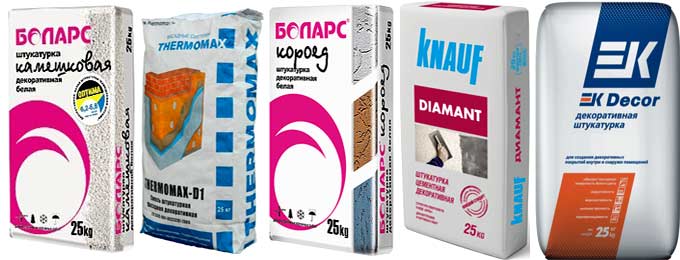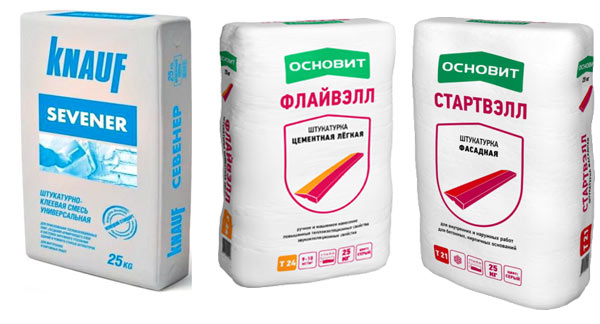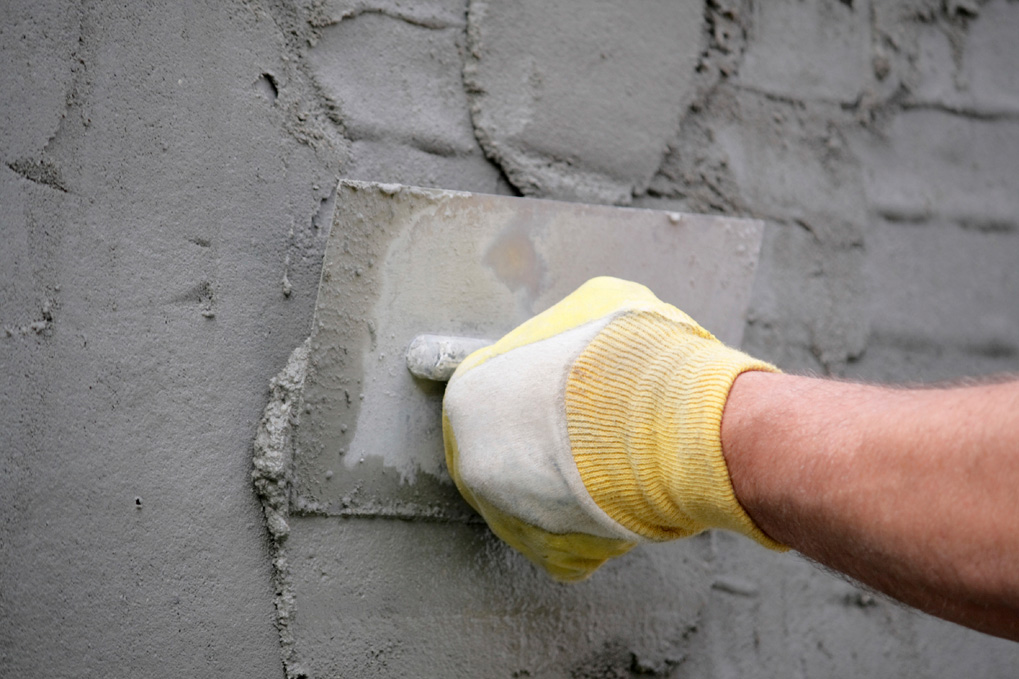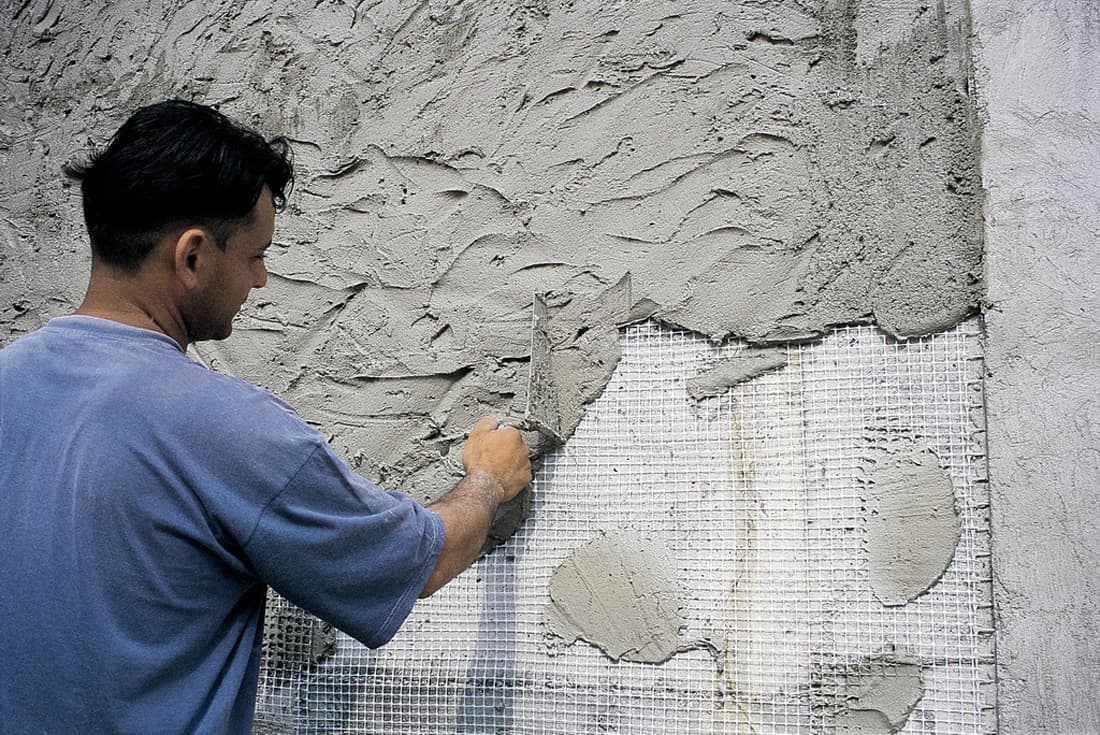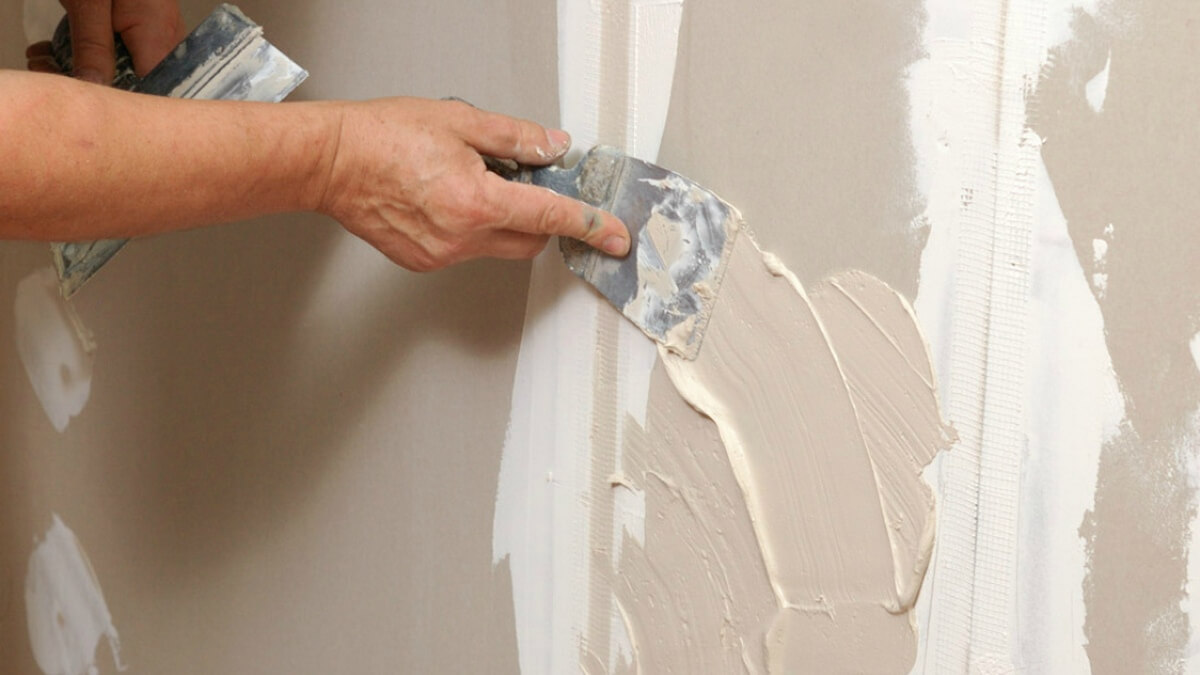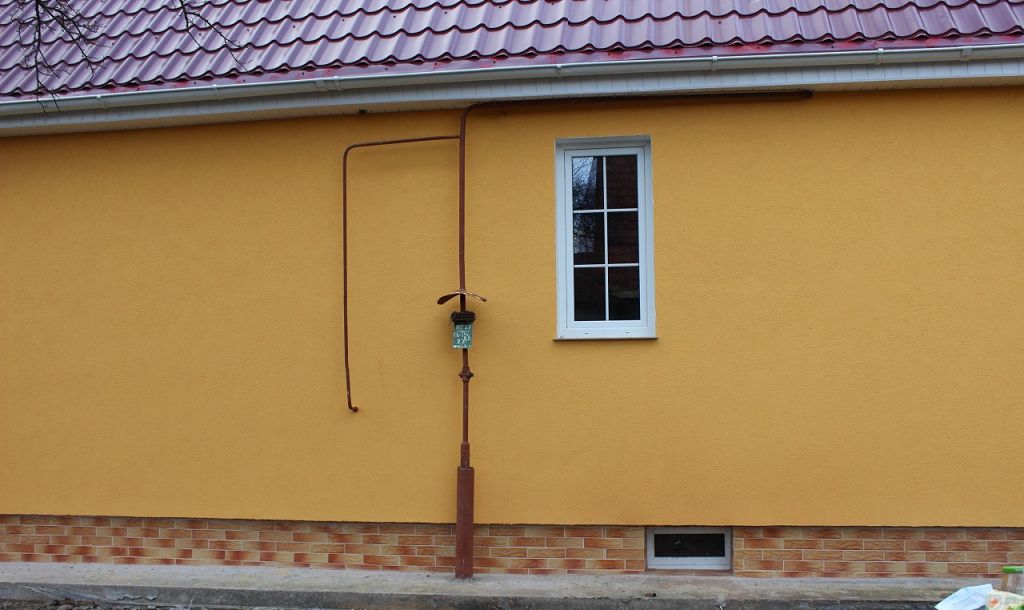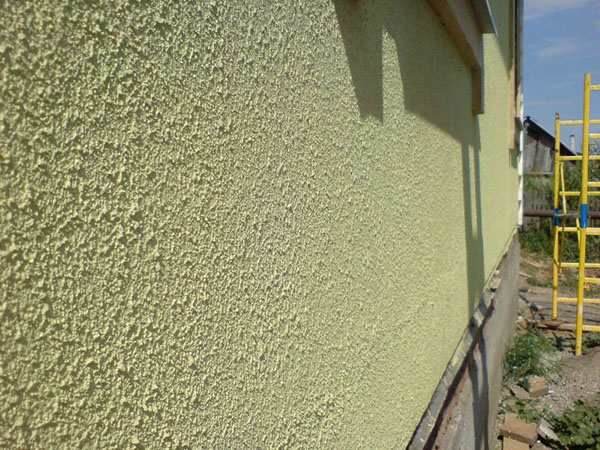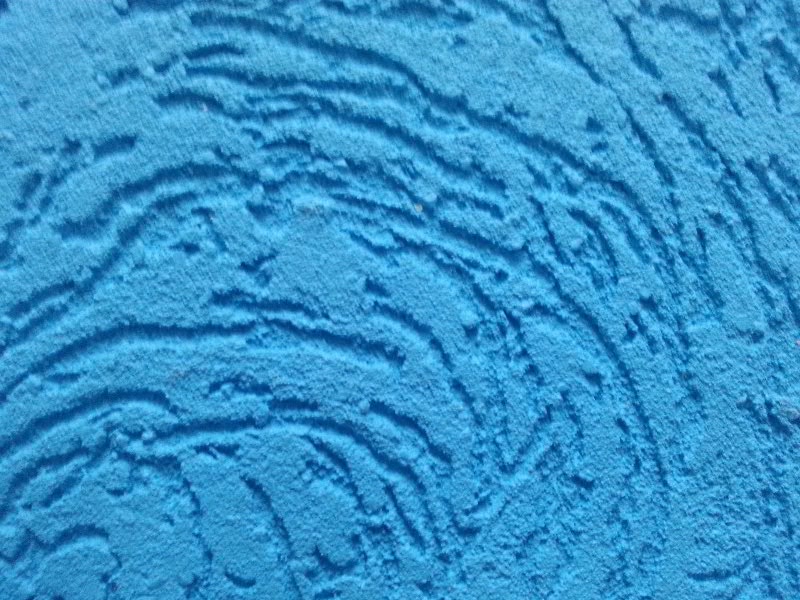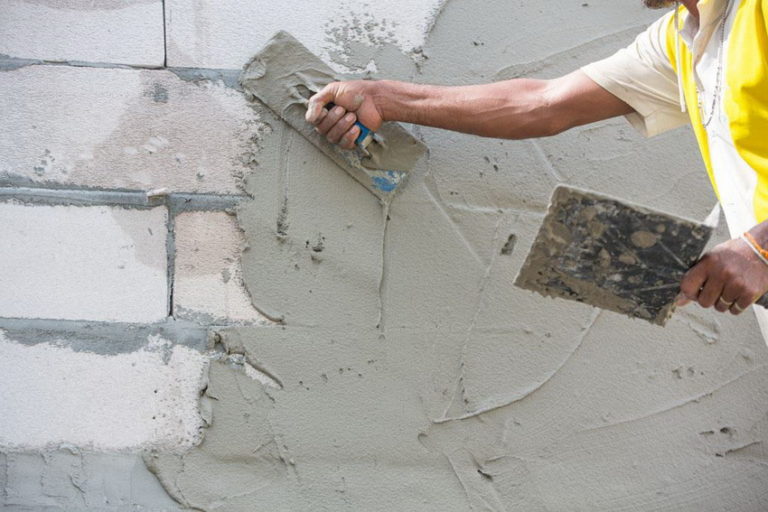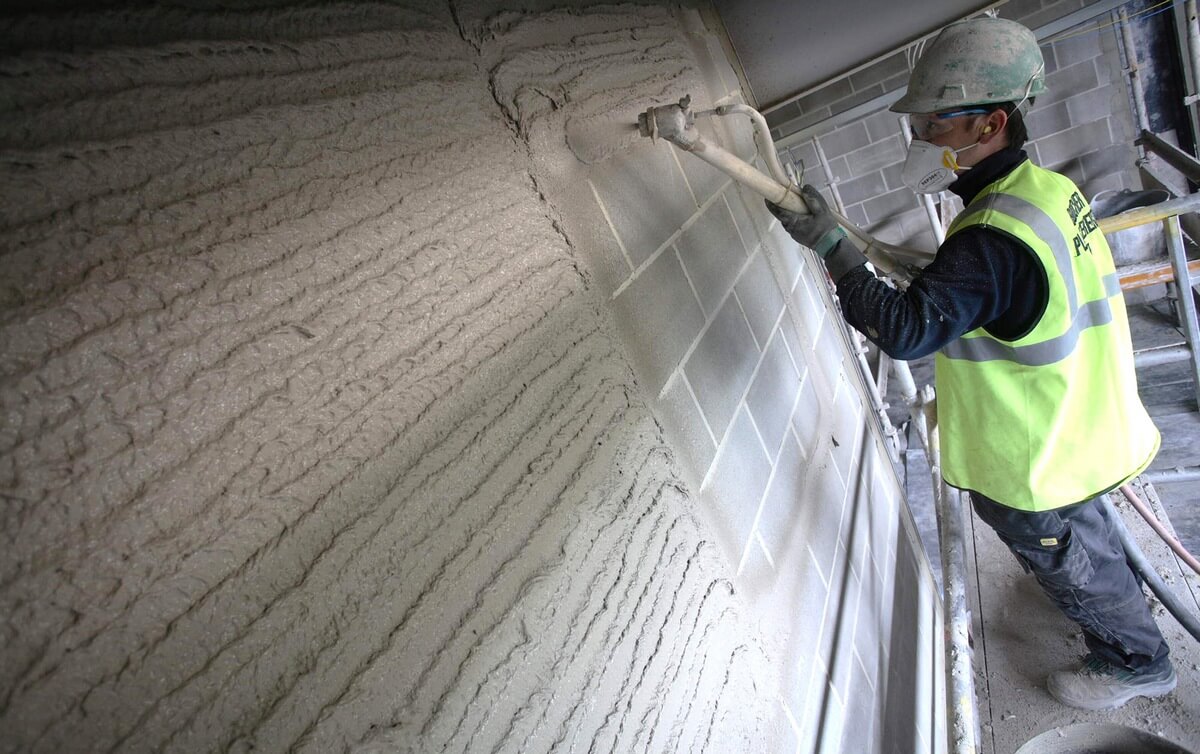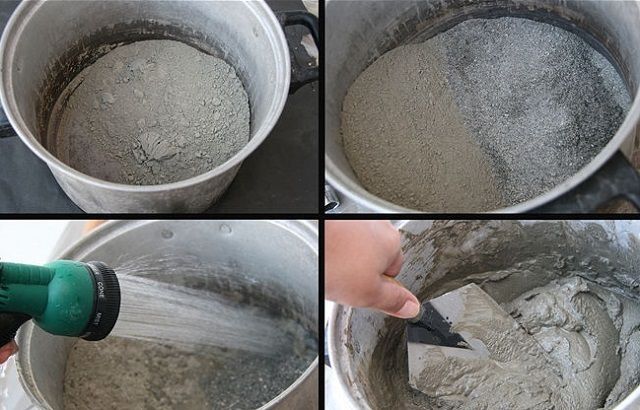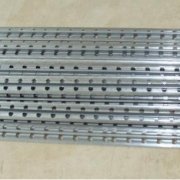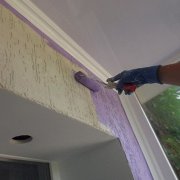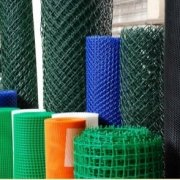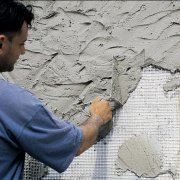Stucco mixes
Previously, the range of stucco mixtures was limited to two or three types. Modern materials are very diverse. This allows finishers to choose a mixture for plaster, which suits the quality, method of preparation and application, as well as cost.
The content of the article
Types of mixture according to the degree of readiness
Plaster mixes are classified according to the degree of readiness:
- Dry formulations. Such products are produced in paper bags by packaging from 5 to 35 kg. The product needs cooking. The product is diluted with water and the solution is kneaded with an industrial mixer. The viability of the composition depends on the type of material. Most often, the solution is used within 40 minutes, after which the product solidifies. The advantage of dry mixes is an acceptable price. The average cost of a bag weighing 25 kg is 150 rubles.
- Finished compounds. The product is released in plastic buckets. The material is used immediately after opening the package. The main advantage is ease of use. In this case, there is no need to use a construction mixer to knead the composition. The disadvantage is the high cost, several times higher than the cost of dry mixes. The average price of a bucket of 25 kg is 350 rubles.
Varieties of the mixture in composition
Several mixtures are isolated, depending on the composition. Each product has advantages and disadvantages, as well as application rules.
Cement composition
This is a universal plaster mix. The product is suitable for the decoration of building facades, as well as inside unheated rooms and in rooms with high humidity. Such a plaster mixture is universal used for finishing pools, garages, warehouses or bathrooms.
Advantages of cement composition:
- increased strength;
- durability;
- resistance to mechanical stress;
- affordable cost;
- vapor permeability;
- thermal conductivity;
- frost resistance;
- moisture resistance;
- resistance to temperature extremes;
- the possibility of cooking with your own hands.
Universal cement-based plaster mix also has disadvantages:
- high weight of the solution, which makes application difficult;
- long period of solidification.
Despite its shortcomings, cement-based material is popular with finishers.
Cement-lime composition
It is also a versatile product that is used for exterior and interior decoration. The material is suitable for indoor use with high humidity.
The universal plaster cement-lime mixture has the following advantages:
- affordable cost;
- plastic;
- good adhesion to various types of building bases;
- ease of use;
- lack of harmful impurities in the composition;
- resistance to mold and mildew on the surface;
- moisture resistance;
- frost resistance;
- resistance to temperature extremes;
- no cracks after solidification.
The disadvantages of the tool:
- low strength;
- pungent odor, therefore, when using the material it is necessary to use personal protective equipment.
Gypsum composition
Such a product does not apply to universal formulations, since it is recommended for use only inside dry heated rooms.Despite this, the material is in demand among finishers, since it has high quality and good characteristics.
Advantages of gypsum plaster:
- the absence of harmful impurities in the composition;
- lack of an unpleasant smell;
- heat and noise insulation of the room;
- ease of use;
- elasticity;
- air circulation, which prevents the appearance of mold and fungus on the surface;
- material does not need subsequent puttying for final leveling of the base.
Disadvantages of gypsum composition:
- lack of moisture resistance, due to which the material cannot be used in a room with high humidity;
- the viability of the finished solution is 40 minutes, which forces the master to work at high speed or to prepare the minimum amount of funds;
- low strength and a tendency to abrasion, so the finish is short-lived;
- incompatibility with building bases made of metal, wood and plastic.
Adhesive composition
A mixture of stucco-glue - a type of material for plastering various types of surfaces. Advantages of the product:
- high pour point;
- plastic;
- moisture resistance;
- resistance to sudden changes in temperature.
Material disadvantages:
- low viability of the finished solution;
- the inability to use for plastering the facade.
The Sevener stucco-adhesive mixture from the Knauf company is popular.
Polymer composition
This is a finished composition based on acrylic resins. Advantages of the product:
- increased strength;
- ease of application;
- the ability to use for all types of surfaces, inside and outside the building, as well as as a starting or decorative coating;
- rich colors.
Disadvantages:
- low vapor permeability;
- high cost compared to dry formulations.
Silicone compound
This is a finished material, the basis of which is potash glass. Material Advantages:
- use as a starting and finishing tool indoors and outdoors;
- air circulation, therefore, condensate does not accumulate under the material;
- moisture resistance;
- frost resistance;
- resistance to temperature extremes.
The disadvantages of the tool:
- low strength;
- complexity of repair - if a surface area needs restoration, then only this type of plaster will have to be used to repair damage.
Silicate composition
The main active ingredient is silicone resins. Product Advantages:
- vapor permeability;
- breathability;
- long period of operation.
Of the shortcomings, professionals allocate only a high cost in comparison with the listed materials.
Types of mixture by application method
According to the method of application, two types of funds are distinguished: for manual and machine application.
Mix for manual application
In this case, use a trowel, spatula or dipper to apply the product, as in the photo below. Such products are characterized by a thick consistency of the solution, since binders and fillers are present in the composition. The plaster is applied over beacons, leveled using the rule and wiped with an industrial grater after solidification. In this way, 10 m2 can be processed in 60 minutes, but the professionalism of the plasterer is of great importance.
Mix for machine application
Plaster mix for machine application - a product that is applied to the surface using a special unit. The product has a liquid consistency. Ready and dry plasters for machine application are produced. In this case, it is recommended to use dry material, since the product has an acceptable price, and the unit will independently knead a solution of the desired consistency.
This method of application is rarely used at home. This is because the unit has a high cost. This makes the purchase of the device impractical if the machine is used once. The exception is large areas. However, it is recommended that you invite a professional to handle such surfaces.
If the plastering of surfaces by machine is done according to the rules, then the finish will last for 20 years or more. This method allows you to process in 60 minutes 60 m2 of the construction base.
Popular mix manufacturers
Masters recommend the use of material only by professional manufacturers, as this guarantees the quality of the product. Funds from companies Tserizit, Knauf, Bergauf and Volma are in demand. The lines of these brands include cement, gypsum, silicone, silicate and polymer materials.
DIY cooking
Despite the wide range of materials, the craftsmen are still preparing the plaster on their own. This allows professionals to make a tool with an optimal ratio of components, as well as save a significant amount of money.
Do-it-yourself plaster mix is prepared according to several recipes.
Cement-sand mixture
To prepare the product you will need:
- cement grade M400 or M500 - 1 part;
- sand - 3-5 parts;
- water - 0.7-0.8 parts.
Sand is sieved through a metal sieve with small cells and combined with cement. The products are thoroughly stirred and poured with water. The solution is kneaded with an industrial mixer and used as intended. Material viability - up to 30 minutes. For this reason, it is recommended to prepare the solution in small portions.
Cement-lime mixture
To prepare the product you will need:
- cement - 1 part;
- lime dough - 2 parts;
- sand - 6-9 parts;
- water - "by eye".
Sand is sieved through a metal sieve with small cells and mixed with cement. The dough and such an amount of water are added to the mass so that a solution of the consistency of thick sour cream is obtained. The material is kneaded with a construction mixer and immediately used for its intended purpose. The product is not subject to storage.
The video in this article demonstrates how to use stucco properly.
Plaster mixes - a material for leveling and protecting a building foundation. To get a quality finish, it is important to choose the right tool.
